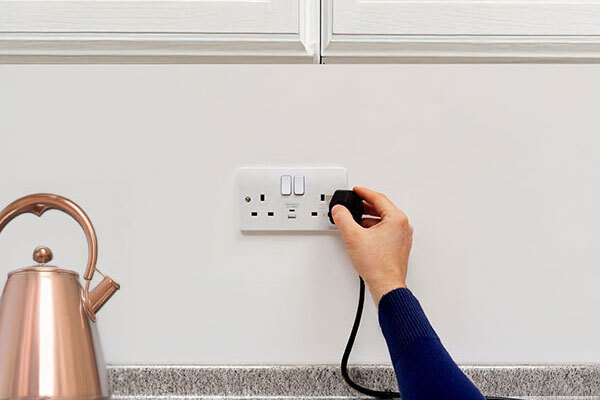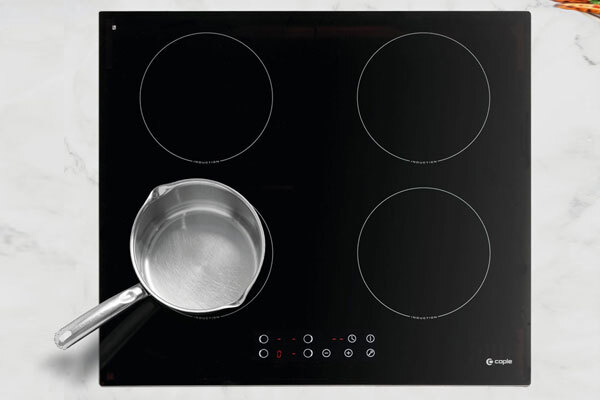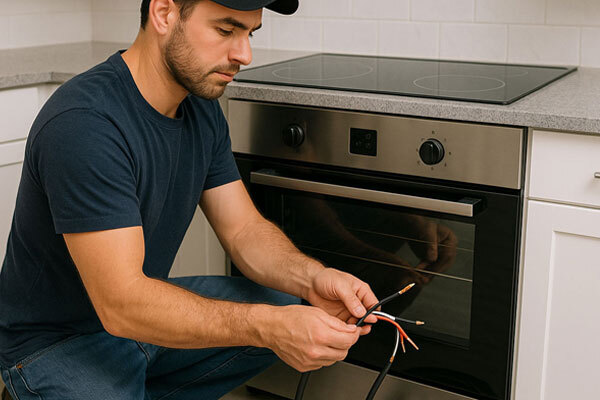When To Hardwire Or Plug In Kitchen Appliances: A UK Power Guide
Posted by Lorraine on 30th Apr 2025

When buying a new kitchen appliance, especially powerful ones like ovens, hobs, or microwave ovens, one important question comes up: should it be plugged in or hardwired? This decision often depends on the appliance's power rating and UK electrical safety regulations. Getting it wrong can lead to tripped fuses, unsafe installations, or even fire hazards.
In this guide, we'll break down when it's suitable to plug in an appliance and when hardwiring is required, based on kilowatt (kW) and amp (A) ratings, specifically for the UK market.
Here at Appliance House, we believe it's always essential to refer to the manufacturer’s installation guide and consult a qualified electrician for your specific situation. But here’s a general overview to help you understand the basics before making a purchase.
Understanding Power Ratings: Kilowatts and Amps
In the UK, standard plug sockets are rated at 13 amps and are designed for appliances up to about 3 kW. This means any appliance, or combination of appliances, plugged into a single socket should not exceed this power limit (3000 watts). Anything above that typically requires a dedicated circuit and must be hardwired into the mains electricity supply.
Plug-in Appliances (Suitable for 13 Amp Plugs)

These are typically lower-powered appliances and can be safely connected to a standard 13A socket.
- Power Rating: Up to 3 kW (13 amps)
- Typical Appliances: Freestanding microwaves, compact combination ovens, small hobs, mini ovens
- Connection: Standard UK 3-pin plug
If your appliance falls into this category, you can generally plug it straight into a wall socket. However, the appliance should still be positioned and ventilated according to the manufacturer’s guidance.
Induction hobs - Plug In Models
Induction hobs are commonly available in two main power ratings: around 3kW (13 amps) and 7.4kW (32 amps). The higher-powered models must be hardwired to a dedicated 32A circuit, while 3kW models like the Caple C841i Induction Hob are often designed to work with a standard 13A plug socket. However, it's important to note that some 3kW induction hobs include a boost function, which can temporarily draw more power, potentially pushing them beyond the safe limits of a regular socket.

Hardwired Appliances (Beyond 13 Amps)
Appliances that draw more than 3 kW (or over 13 amps) should not be plugged into a standard socket. These must be hardwired into a suitable electrical circuit.
- Power Rating: Above 3 kW (typically 13–45 amps depending on the model)
- Typical Appliances: Built-in electric ovens, induction hobs, large combi microwaves, double ovens
- Connection: Hardwired to a dedicated circuit via a cooker switch and isolation point
High-powered cooking appliances often require a dedicated cooker circuit from your consumer unit (fuse box), fitted with the correct protective devices (MCB or RCD). Your electrician will calculate the exact current demand and choose the appropriate cable size and protection for the appliance.
Quick Reference Table: Plug vs. Hardwire Guide (UK Ratings)
| Appliance | Typical Power (kW) | Current (A) | Plug-In or Hardwire? |
|---|---|---|---|
| Microwave (freestanding) | 0.8 – 1.2 kW | 3 – 5 A | Plug-In |
| Compact Combi Microwave | 1.5 – 2.5 kW | 6 – 11 A | Plug-In |
| Standard Electric Oven | 2.5 – 3.6 kW | 11 – 16 A | Hardwire |
| Double Electric Oven | 4.0 – 5.5 kW | 17 – 24 A | Hardwire |
| Induction Hob | 5.8 – 7.4 kW | 25 – 32 A | Hardwire |
Why Proper Installation Matters
Incorrectly connecting a high-powered appliance to a standard plug socket is dangerous. Overloaded circuits can overheat, damaging the wiring or triggering electrical fires. That’s why manufacturers provide specific installation instructions, and why you should always involve a professional electrician, especially when hardwiring is required.
Additional considerations include:
- Ventilation: Built-in appliances often require ventilation gaps.
- Isolation: Hardwired appliances must be connected to an accessible isolation switch (usually within 2 metres).
- Positioning: Avoid placing plug-in appliances behind built-in units where the plug can't be easily reached.
Always Follow the Manufacturer’s Instructions
Each appliance comes with a manual that includes installation requirements and safety information. These must be followed exactly, as manufacturers design their products with specific power loads in mind. If you’re unsure, show the manual to your electrician before installation begins.
Consult a Qualified Electrician
Even if an appliance seems simple enough to install, UK wiring regulations (BS 7671) are detailed and frequently updated. A qualified electrician will ensure that your setup meets these standards, and in many cases, you may even need a certificate to show that the work was completed safely and legally.
Gas Safety Register provides full information and safety guides about the safe installation of gas hobs and appliances.

Choosing the Right Appliance for Your Kitchen
Now that you know when to hardwire and when to plug in, you can choose your kitchen appliances with greater confidence. Whether you’re after a simple plug-in microwave or a powerful built-in induction hob, it's essential to plan around your kitchen’s electrical capacity and wiring setup.
At Appliance House, we offer a wide range of high-quality kitchen appliances, from energy-efficient ovens and sleek induction hobs to compact microwaves—all backed by expert advice and excellent customer service. Whether you're renovating or just upgrading an old appliance, we've got you covered with options for every power setup.
Need help choosing the right appliance? Get in touch—we’re happy to help!





